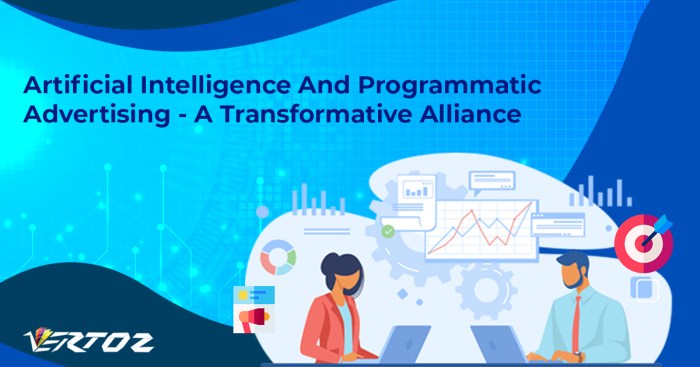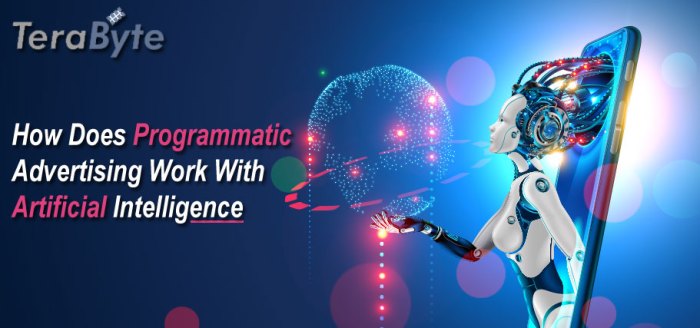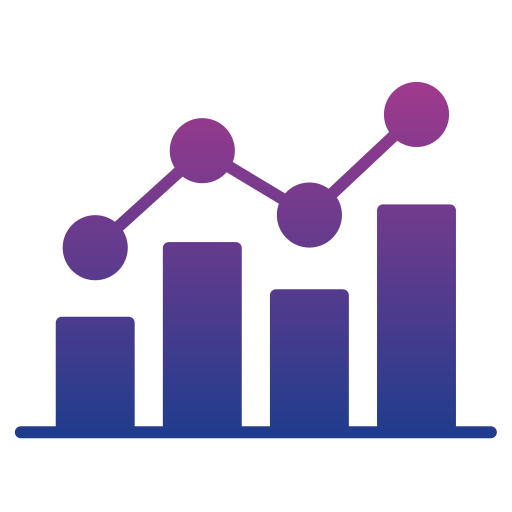AI for programmatic advertising sets the stage for a revolution in digital marketing, transforming how brands connect with their target audiences. This technology leverages the power of artificial intelligence to automate and optimize advertising campaigns, delivering unprecedented levels of efficiency and effectiveness.
Programmatic advertising, the automated buying and selling of ad space, has been a game-changer in the digital landscape. But the introduction of AI takes it to a whole new level. AI algorithms analyze vast amounts of data about user behavior, preferences, and demographics, enabling marketers to target their messages with laser-like precision.
This data-driven approach ensures that ads reach the right people at the right time, maximizing engagement and ROI.
Introduction to AI in Programmatic Advertising
Programmatic advertising has revolutionized the way brands reach their target audiences. It’s a data-driven approach that automates the buying and selling of ad space, optimizing ad delivery based on real-time data and audience insights. While programmatic advertising has been around for a while, the integration of artificial intelligence (AI) is ushering in a new era of efficiency, personalization, and effectiveness.AI is transforming programmatic advertising by addressing the limitations of traditional advertising methods.
Traditional methods often lack the precision and adaptability needed to reach the right audience at the right time. AI algorithms analyze vast amounts of data to identify patterns and predict user behavior, enabling advertisers to target their campaigns with greater accuracy and personalization.
AI Applications in Programmatic Advertising
AI is playing a crucial role in various aspects of programmatic advertising, enhancing campaign performance and delivering better results. Here are some key applications:
- Audience Targeting:AI algorithms analyze user data, including demographics, interests, browsing history, and purchase behavior, to create detailed audience profiles. This allows advertisers to target specific segments with highly relevant ads, increasing engagement and conversion rates.
- Real-Time Bidding (RTB):AI powers RTB platforms, enabling advertisers to bid on ad impressions in real-time based on user data and campaign goals. AI algorithms optimize bids, ensuring that advertisers reach the right audience at the most efficient price.
- Ad Optimization:AI analyzes campaign performance metrics, such as click-through rates (CTR), conversion rates, and cost per acquisition (CPA), to identify areas for improvement. It can dynamically adjust ad creatives, targeting, and bidding strategies to maximize campaign effectiveness.
- Fraud Detection:AI is used to identify and prevent ad fraud, which can significantly impact campaign performance and ROI. AI algorithms analyze patterns in ad traffic and identify suspicious activities, such as bot traffic and click-baiting.
Key AI Technologies in Programmatic Advertising
Artificial intelligence (AI) is transforming programmatic advertising by automating and optimizing ad campaigns, making them more efficient and effective. AI technologies, such as machine learning, natural language processing, and computer vision, are playing a crucial role in this transformation.
Machine Learning in Programmatic Advertising
Machine learning algorithms are used to analyze vast amounts of data about user behavior, ad performance, and market trends. This analysis enables the optimization of ad campaigns in real time, leading to better targeting, increased conversions, and reduced costs.
- Predictive Modeling:Machine learning algorithms can predict user behavior and preferences based on historical data, allowing for more accurate targeting and personalized ad delivery.
- Bidding Optimization:AI-powered bidding algorithms analyze real-time data to determine the optimal bid for each ad impression, maximizing ROI while minimizing wasted ad spend.
- Ad Creative Optimization:Machine learning can analyze the performance of different ad creatives, identifying the most effective ones and optimizing them for better engagement and conversion rates.
Natural Language Processing in Programmatic Advertising
Natural language processing (NLP) enables machines to understand and interpret human language, making it possible to analyze user data and personalize ad content.
- Sentiment Analysis:NLP can analyze user reviews, social media posts, and other online content to understand user sentiment towards brands and products. This information can be used to tailor ad messaging and target users who are more likely to be receptive to the message.
- Content Personalization:NLP can be used to personalize ad content based on user interests and preferences, making it more relevant and engaging. For example, AI can analyze a user’s browsing history and social media activity to understand their interests and deliver ads for products or services that align with those interests.
Computer Vision in Programmatic Advertising, AI for programmatic advertising
Computer vision enables machines to “see” and interpret images, making it possible to analyze ad creatives and optimize them for better performance.
- Image Recognition:Computer vision algorithms can recognize objects, scenes, and faces in images, allowing for more targeted ad delivery. For example, an algorithm could identify images of cars in a user’s browsing history and deliver ads for car insurance or automotive services.
- Ad Creative Optimization:Computer vision can analyze the visual elements of ad creatives, such as color, composition, and text, to identify those that are most effective in capturing user attention and driving engagement.
Benefits of AI for Programmatic Advertising
AI has revolutionized programmatic advertising, offering a plethora of benefits that enhance campaign effectiveness, efficiency, and overall return on investment (ROI). By leveraging the power of AI, advertisers can unlock new opportunities to reach their target audiences with precision and optimize campaigns for maximum impact.
Enhanced Audience Targeting and Segmentation
AI significantly enhances audience targeting and segmentation, enabling advertisers to reach the right people with the right message at the right time. This is achieved through various AI-powered techniques, including:
- Machine Learning Algorithms:AI algorithms analyze vast amounts of data, including user demographics, browsing history, interests, and online behavior, to create detailed audience profiles. These profiles allow advertisers to segment audiences based on specific characteristics and target them with tailored campaigns. For example, an advertiser selling luxury watches could target individuals with high income, a history of purchasing high-end goods, and an interest in luxury brands.
- Predictive Analytics:AI can predict future user behavior based on historical data and current trends. This allows advertisers to anticipate audience needs and deliver relevant ads before they even express their interest. For instance, an e-commerce platform could use predictive analytics to identify users likely to purchase a specific product and target them with personalized recommendations or promotions.
- Real-Time Bidding (RTB):AI algorithms analyze real-time data, such as user location, device type, and browsing context, to determine the most appropriate ad placement and bid accordingly. This ensures that ads are displayed to users who are most likely to engage with them, maximizing the chances of conversion.
For example, an advertiser could use RTB to bid on ad inventory that is relevant to the user’s current search query or browsing history.
Challenges and Considerations in AI-Powered Programmatic Advertising

While AI offers numerous benefits for programmatic advertising, it’s crucial to acknowledge and address the potential challenges and considerations that come with its implementation. These challenges span ethical concerns, technical integration, and the need for skilled professionals.
Data Privacy and Transparency Concerns
AI-driven advertising relies heavily on data, raising concerns about data privacy and transparency. Ethical considerations arise when AI algorithms analyze vast amounts of personal information to personalize ads, potentially leading to:
- Data misuse and breaches:The potential for unauthorized access or misuse of sensitive personal data collected for advertising purposes poses a significant risk. This can lead to privacy violations and damage user trust.
- Algorithmic bias and discrimination:AI algorithms can perpetuate existing societal biases if trained on biased data. This can result in discriminatory advertising practices, targeting certain groups unfairly.
- Lack of transparency in decision-making:The complex nature of AI algorithms can make it difficult to understand how decisions are made, leading to concerns about accountability and fairness. This opacity can hinder efforts to identify and address potential biases.
To mitigate these concerns, transparency and accountability are paramount. Advertisers should implement measures such as:
- Data minimization:Only collect and use data necessary for advertising purposes, minimizing the amount of personal information gathered.
- Data encryption and security:Implement robust security measures to protect user data from unauthorized access and breaches.
- User consent and control:Provide users with clear and transparent information about how their data is being used and allow them to opt out or control their data sharing.
- Auditable algorithms:Develop and deploy AI algorithms that are transparent and auditable, enabling stakeholders to understand how decisions are made.
Challenges of Integrating AI with Existing Programmatic Platforms
Integrating AI into existing programmatic advertising platforms presents various technical challenges, including:
- Compatibility issues:Integrating AI algorithms with existing programmatic platforms can be challenging due to differences in data formats, APIs, and technical specifications.
- Data infrastructure and scalability:Processing and analyzing massive datasets required for AI-powered advertising demands robust data infrastructure and scalable computing resources.
- Algorithm training and optimization:Training AI algorithms requires large amounts of data and ongoing optimization to ensure accurate and effective performance.
- Real-time decision-making:AI algorithms need to make decisions in real time to deliver relevant ads to users, requiring efficient processing and low latency.
Addressing these challenges requires collaboration between AI experts, programmatic platform developers, and advertisers. This involves:
- Developing standardized APIs and data formats:Facilitating seamless integration between AI algorithms and programmatic platforms.
- Investing in cloud computing infrastructure:Providing scalable computing resources to handle large datasets and real-time processing demands.
- Continuous algorithm training and optimization:Ensuring that AI algorithms remain accurate and effective over time.
- Prioritizing real-time performance:Optimizing algorithms for low latency and efficient decision-making.
Need for Skilled Professionals
Managing and interpreting AI-generated insights requires skilled professionals with expertise in both AI and programmatic advertising. These professionals should possess:
- AI expertise:Understanding AI algorithms, data analysis techniques, and model evaluation methods.
- Programmatic advertising knowledge:Familiarity with programmatic advertising platforms, campaign management, and targeting strategies.
- Data interpretation skills:Ability to analyze and interpret AI-generated insights, drawing actionable conclusions from complex data.
- Communication skills:Effectively communicating AI insights to stakeholders, including advertisers and marketing teams.
Future Trends in AI for Programmatic Advertising

The field of programmatic advertising is constantly evolving, and AI is playing a pivotal role in shaping its future. As AI technologies continue to advance, they are poised to revolutionize the way advertisers reach their target audiences, optimize campaigns, and measure results.
AI-Powered Advertising Platforms
AI-powered advertising platforms are becoming increasingly sophisticated, offering a wide range of features and functionalities to enhance programmatic campaigns. These platforms leverage machine learning algorithms to automate tasks, analyze data, and make real-time decisions, ultimately leading to improved campaign performance.
| Platform | Unique Features | Functionalities |
|---|---|---|
| Google Ads | Smart Bidding, Audience Insights, Conversion Tracking | Automated bidding, audience targeting, campaign optimization, performance reporting |
| Adobe Advertising Cloud | Data Management Platform (DMP), Creative Optimization, Cross-Channel Measurement | Data integration, creative personalization, multi-channel campaign management, attribution analysis |
| The Trade Desk | Open Marketplace, Advanced Targeting Options, Data-Driven Attribution | Access to multiple ad exchanges, precise audience segmentation, campaign performance measurement, attribution modeling |
| Amazon Advertising | Product Targeting, Audience Insights, Shopper Graph | Targeting based on products, customer behavior, and Amazon’s vast data network, campaign optimization for e-commerce businesses |
Optimizing Programmatic Advertising Campaigns with AI
AI is transforming the way programmatic advertising campaigns are optimized, enabling advertisers to achieve better results with greater efficiency. The following flowchart illustrates the process of using AI to optimize campaigns: Flowchart:
1. Data Collection
Gather data from various sources, including website traffic, user behavior, and campaign performance metrics.
2. Data Analysis
Utilize AI algorithms to analyze the collected data, identify patterns, and extract insights.
3. Campaign Optimization
Based on the insights gained, AI algorithms adjust campaign parameters, such as bidding strategies, targeting options, and creative elements, in real-time.
4. Performance Monitoring
Continuously monitor campaign performance and use AI to identify areas for improvement.
5. Feedback Loop
Feedback from the monitoring process is used to refine AI algorithms and further optimize campaign performance.
Impact of Emerging AI Technologies
Emerging AI technologies, such as generative AI and reinforcement learning, have the potential to significantly impact the future of programmatic advertising. Generative AI:* Personalized Creative:Generative AI can create personalized ad creatives tailored to individual user preferences, leading to higher engagement and conversion rates.
Dynamic Content
Generative AI can dynamically adjust ad copy and visuals based on user context and behavior, resulting in more relevant and impactful campaigns.
Automated Content Creation
Generative AI can automate the creation of ad copy and visuals, freeing up marketers to focus on strategic tasks. Reinforcement Learning:* Optimal Bidding Strategies:Reinforcement learning algorithms can learn from past campaign data and optimize bidding strategies in real-time, maximizing ROI.
Dynamic Targeting
Reinforcement learning can dynamically adjust targeting options based on user behavior and campaign performance, leading to more efficient audience reach.
Adaptive Campaign Optimization
Reinforcement learning can continuously adapt campaign parameters based on real-time feedback, ensuring optimal performance throughout the campaign lifecycle.
Closure
The future of programmatic advertising is undoubtedly intertwined with AI. As AI technologies continue to evolve, we can expect even more sophisticated and personalized advertising experiences. By embracing AI, marketers can unlock a world of possibilities, reaching new heights in their digital marketing endeavors.
From targeting and optimization to fraud detection and creative design, AI is poised to revolutionize the advertising landscape, empowering brands to connect with their audiences in ways never before imagined.
FAQ Overview
What are the key benefits of using AI in programmatic advertising?
AI offers numerous benefits, including improved audience targeting, enhanced ad creative optimization, increased campaign efficiency, and better fraud detection.
How does AI help with audience targeting?
AI algorithms analyze vast amounts of user data to identify specific audience segments based on demographics, interests, behaviors, and other factors. This allows marketers to target their ads with greater precision, reaching the most receptive audiences.
What are some ethical concerns associated with AI in programmatic advertising?
Ethical concerns include data privacy, transparency, and the potential for algorithmic bias. It’s crucial to ensure responsible use of AI, respecting user privacy and promoting fairness in ad delivery.
